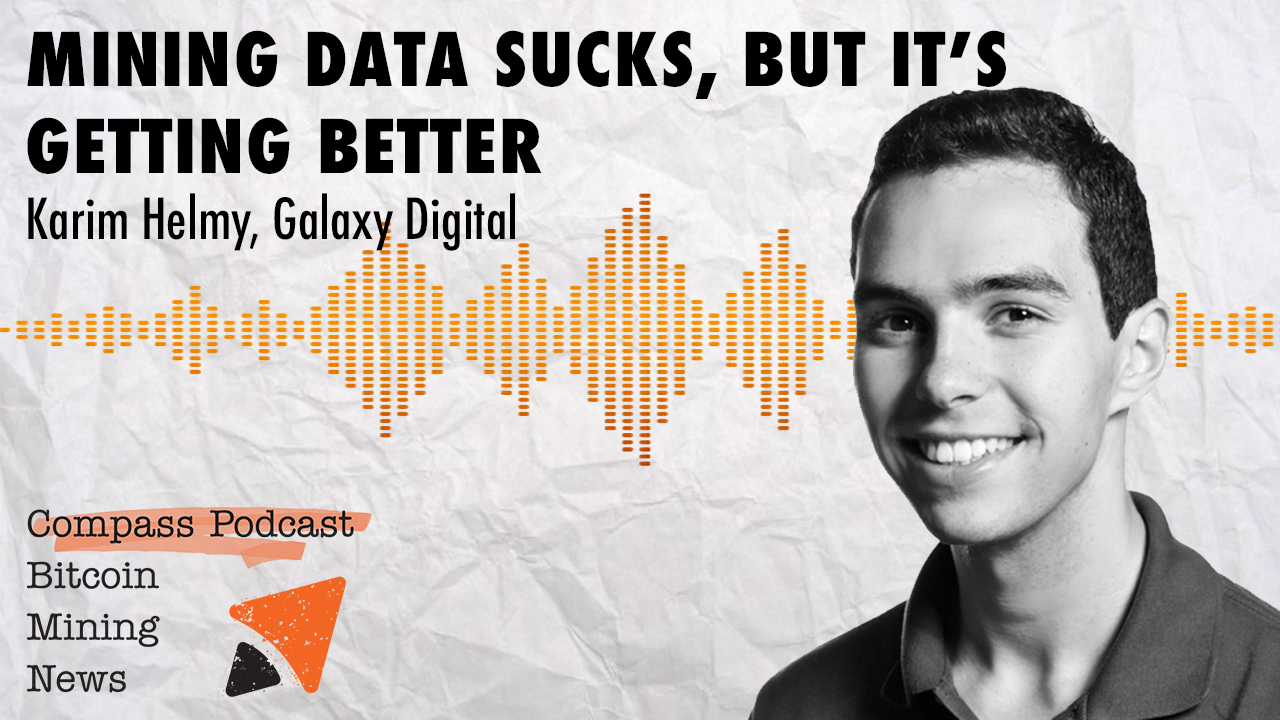 |
|
April 27, 2021
View in Browser
|
|
|
Market Overview
|
| |
Price |
24H |
YTD |
| Bit Digital |
$13.65 |
1% |
-47% |
| Bitfarms |
$5.37 |
20% |
140% |
| Canaan |
$14.78 |
1% |
112% |
| Ebang |
$4.46 |
2% |
-43% |
| Hive |
$3.95 |
11% |
45% |
| Hut 8 |
$7.53 |
15% |
153% |
| Marathon |
$34.90 |
2% |
182% |
| Northern Data |
$90.40 |
-1% |
10% |
| Riot |
$41.35 |
1% |
120% |
|
|
Data as of 12:00 UTC
|
|
|
|
Empty blocks are a secret gold mine for Ethereum mining pools.
|
|
Empty blocks don’t necessarily mean empty pocketbooks, at least for Ethereum mining pools.
Mining pools SparkPool and F2Pool – the first and third largest Ethereum miners by hashrate at 23% and 9%, respectively – have begun minting large batches of Chi gas tokens to offset lost income from empty blocks, according to on-chain analysis. This
revenue stream marks a first in the everchanging Ethereum mining landscape.
Some 240,000 Chi tokens, worth an estimated $800,000 as of writing, have been minted with 0 gas price in April alone, according to data compiled by 1inch.Exchange. A further 89,235 tokens were minted in the same manner in March when the practice became noticed in some mining circles.
|
 |
|
(Anton Bukov, 1Inch.Exchange and Dune Analytics)
Both SparkPool and F2Pool have acknowledged the launch of Chi minting programs, which the latter pool pinned on “latency of block validation times” leading to an “opportunity cost tradeoff for empty block mining.” (You can read F2Pool’s
blog post published April 21 here).
|
 |
|
Chi mints overtime (Dune Analytics)
Gas token minting highlights a major tradeoff of using a mining pool for building blocks on behalf of miners. It is unclear if either SparkPool or F2Pool plan on sharing profits from Chi mintings, even though miners supply the hashpower enabling the blocks’
creation and are forgoing fees to mine empty blocks. If miners had a hand in block selection itself – as proposed under Stratum v2 – there would be less asymmetry in profit sharing.
EVM MEV?
Gas tokens are marketed as a method to store gas on the Ethereum network, and function similarly to an on-chain options contract.
Ethereum rewards people for deleting contracts in order to practice good data housekeeping. Chi and other gas tokens (GST1 and GST2) take advantage of this feature by creating contracts when gas fees are low and deleting contracts when gas fees are high. As expected,
gas token prices increase when on-chain congestion ramps upwards.
Ethereum miners are the prime candidates to exploit this reward function, as the creators of the first gas token, Project Chicago , note. Miners get to choose what goes into a block, how they go into them and how much users must pay for using that block space. And, since mining pools direct hashpower, pools have an almost singular ability to exploit this flaw in the Ethereum Virtual Machine (EVM).
In that sense, mass Chi mints can be thought of as another form of Maximal or Miner Extractable Value (MEV) – where pools profit off of old design flaws in the EVM.
Finding Chi mints on-chain
Blocks mined with a gas price of 0 are a good indicator of miners conducting a transaction on behalf of themselves. While recent innovations in relay networks such as Bloxroute, TaiChi, and Flashbots make similar transactions possible for non-miners, wallet analysis
and heuristics around non-miner Chi mints make it seem unlikely that a meaningful amount of the 0 gas price mints were from relay network traders.
Take this transaction , for example. Notice the 0 gas
fee and the internal transaction which makes a call to 1INCH to mint gas tokens. Trader mints typically fill up half a block (140 Chi), but SparkPool and F2Pool fill the whole block with upwards of 380 Chi. That number will likely increase as Ethereum miners increased the per block gas limit last week from 12.5 million to 15 million.
|
 |
|
Quick back-of-the-napkin math helps show how prolific Chi minting could become. About 2% of 130 Ethereum blocks are empty per day – about 4,000 per month. If these two pools continue to control 32% of the network hashrate, they could mint hundreds of thousands
of Chi tokens per month – as they already likely are.
Of course, doing so at such a scale would necessarily hurt the Chi token’s market value and would make some developers unhappy given additional bloat to the Ethereum state. The Chi token and other gas tokens are also likely to be sunset this July with the
London hardfork. So, perhaps the mass mints are only a temporary way to raise funds.
That said, the negative externalities of worthless data being tacked onto the Ethereum network can’t be overlooked, nor can the extra work miners are conducting but not being compensated for by pools.
Special thanks to Anton Bukov and Karim Helmy.
|
|
|
|
Mining Newsfeed
|
|
🧭 Hashrate up; difficulty down.
Even as bitcoin’s hashrate has almost fully rebounded from its acute drop last week, estimates for the next difficulty adjustment at block 681,408 (on May 1) continue dropping. The current adjustment is estimated to see difficulty drop by almost 11%, the
largest decrease since November 2020. With hashing power returning to the network and a large expected drop in difficulty, the next difficulty epoch could see miners enjoy a period of marginally higher profitability. It’s not quite a free lunch, but it’s definitely a coupon for a cheaper one.
|
|
🧭 Ethereum miners up the per block gas limit from 12.5M to 15M.
Ethereum miners voted to increase the per block gas limit of each Ethereum block this last week after Vitalik Buterin signaled support for such a measure on Reddit. By design, Ethereum miners can set the gas limit, which sets how many transactions can fit into a block, but have only done so following consent from Ethereum developers. An increase in the block gas limit should temporarily alleviate gas fees on-chain, as many traders have already noticed.
|
|
|
|
Proof of Work Overview
|
| Bitcoin |
| |
|
7D |
YTD |
| Price |
$55,001 |
-2% |
90% |
| Difficulty |
20.6T |
0% |
27% |
| Revenue* |
$0.36 |
-12% |
66% |
| Hashrate |
165 EH/s |
8% |
11% |
| Ethereum |
| |
|
7D |
YTD |
| Price |
$2,566 |
16% |
251% |
| Difficulty |
6,846T |
9% |
92% |
| Hashrate |
506 TH/s |
7% |
85% |
|
|
* measured by $/TH/s
|
|
|
|
Quick Bits
|
-
North American mining pool Foundry briefly popped into the Top 5 rankings for pool hashrate distribution.
-
ARK Invest and Square’s crypto arm partnered to publish a whitepaper on driving forward bitcoin mining’s renewable energy future.
-
Marathon tapped board member Fred Thiel as its new CEO, replacing Merrick Okamoto who held the position since 2017.
-
Arctos Capital, a mining financing service provider, has been acquired by bitcoin broker NYDIG.
-
Canaan is reportedly shipping 11,760 next-gen Avalonminers to publicly traded Mawson Infrastructure Group after Mawson acquired Cosmos Capital, a mining and asset management business.
-
Ebang is hit with a lawsuit over making allegedly misleading financial statements to shareholders.
-
Antminer teased the specifications of its new Ethereum mining machine, equipped with 3 GH/s hashrate, 0.85 J/M efficiency, and 2,556W power consumption.
|
|
|
|
|
|
 |
|
|
|
No, Miners Don't Manipulate the Market with Leo Zhang of Anicca Research
|
|
|
|
 |
|
|
|
Mining Data Sucks, but Its Getting Better with Karim Helmy of Galaxy Digital
|
|
|
|
|
|
|
|
|
Compass is a modern media and Bitcoin mining company focused on driving the mass adoption of cryptocurrency. Our research analysts and content creators strive to provide actionable and engaging content on the most relevant industry topics.
For more information, to share content ideas, or to discuss mining news, email us at media@compassmining.io.
|
|
|
|
|